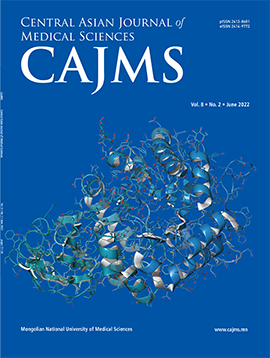Renal Dysfunction After Liver Transplantation: a Single Center Study
DOI:
https://doi.org/10.24079/cajms.2021.12.005Keywords:
Renal Dysfunction, Liver, TransplantationAbstract
Objectives: Mongolia is known as one of the countries with a high prevalence of viral hepatitis infection and its related liver cirrhosis and HCC. Therefor, liver transplantation (LT) surgery increases from year to year in Mongolia. Our goal was to evaluate post-transplant renal dysfunction (PTRD) and to investigate the predicting factors for renal dysfunction after LT. Methods: The impact of graft ischemic time, peri- and postoperative blood product transfusion, perioperative hemodynamics, time to extubating, intensive care length of stay, incidence of chronic renal failure, and mortality and morbidity were examined alone and then as a combined outcome. Results: Early renal dysfunction was identified by measuring serum creatinine and glomerular filtration rate. In our investigation which was a study group of patients following liver transplantation (LT), the following renal dysfunctions were found: 39% of recipients in the study had renal dysfunction, while the rest had no renal dysfunction. The average creatinine level of the recipients who had a renal dysfunction after LT, was 0.825 ± 0.24 mg/dl and the glomerular filtration rate was 111 ± 36.3 ml/min, and statistically significant. Conclusion: Preoperative kidney function plays a crucial role for postoperative renal dysfunction.
Downloads
217
Downloads
Published
How to Cite
Issue
Section
License
Copyright (c) 2021 Mongolian National University of Medical Sciences

This work is licensed under a Creative Commons Attribution-NonCommercial 4.0 International License.




